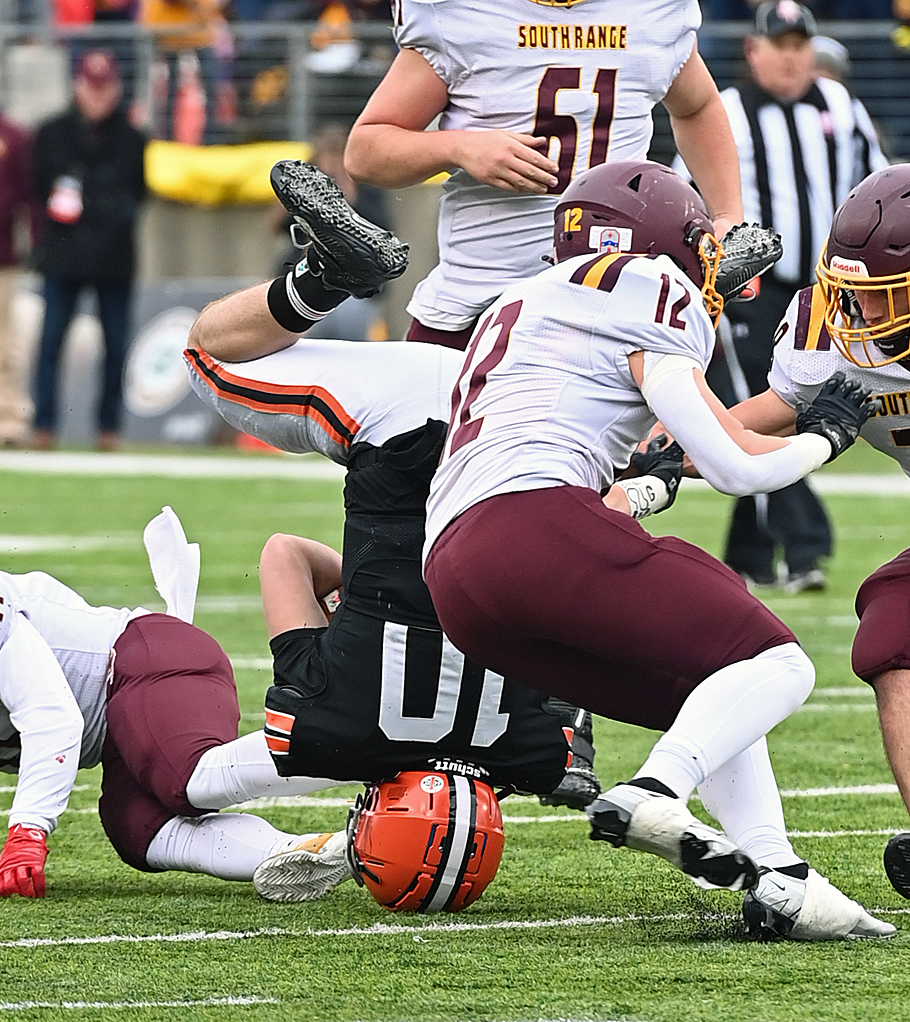
Loss of revenues from the state tournament process drove the OHSAA into a make-more-money and make-it-now mode. (Press Pros Feature Photos)
A recent column in the Toledo Blade has made the rounds now across Ohio, raising eyebrows and questions about the Ohio High School Athletic Association’s ‘non-profit’ status, and shedding light on why we’re now playing high school football games in the middle of the summer’s worst heat.
 The mailbox was full, as always, when I returned last week from five days in California, visiting son Matt and his wife Ali, and navigating the wonderful system of air travel … delays, confusion, and smelly, cramped seating.
The mailbox was full, as always, when I returned last week from five days in California, visiting son Matt and his wife Ali, and navigating the wonderful system of air travel … delays, confusion, and smelly, cramped seating.
And the idea of ‘festival’ seating promoted by Southwest Airlines was meant for concerts. Not five-hour flights cross-country.
There are always a lot of emails from out of the area, but to my surprise several took the time to share the link to columnist David Briggs’ piece on July 29 from the Toledo Blade, where Briggs detailed the growing cash war chest of the Ohio High School Athletic Association, its Covid windfall from the state of Ohio following the shutdown and limited ticket sales for recent state tournaments, and other revenue enhancing changes by the OHSAA in the short span of the last three years.
That column is widely available to read if you Google it, by the way, despite the Blade’s paywall. I found it on Facebook, and it is enlightening (https://www.toledoblade.com/sports/high-school/2023/07/28/briggs-ohsaa-making-huge-profits-where-is-money-going/stories/20230728155)
Some who wrote to us, however, chose a different adjective…revealing.
“Now we know why there’s high school football in the middle of August,” wrote Dan, from Gallia County.
Tom, from Franklin County, added: “It feels like the federal government. They’re supposed to be working for us, not us working for them.”
A common word that populated nearly every email, was … greed!

The common sentiment heard from those who write about they want from the Ohio High School Athletic Association: “Just give us a good state tournament.”
A common sentiment? If they’re making a living off Ohio high schools…give that money back to the schools!
A lot of people who have read, or will yet read, the Briggs column will form their own opinion on where all the money goes – money that the OHSAA will staunchly maintain as being necessary for the evolving administration of high school sports and keeping it current for the changing needs of Ohio athletes. To ensure diversity, equity, inclusion, and fairness, for instance. And of course, its bedrock mantra of promoting sportsmanship and respect for competition, as a valued extension of the overall adolescent educational experience.
None of us, or at least few, have ever questioned that.
Now, however, the administration of high school sports appears to be a micro-example of what we’ve grown weary of in Washington – too much of a good thing, or what was believed to be a good thing back when Roosevelt invented Social Security, and the OHSAA was constituted, to, in simplest terms, facilitate a fair and trusted process of determining an unquestioned state champion in basketball, back in the post-depression years.
Briggs, in his column, sheds light on the growing frustration of school districts whose financial support from the OHSAA has literally withered to nothing in the past three years, while reporting: “I went through the tax filings of prep associations in the more than 40 states structured like Ohio, where a non-profit organization governs the athletic competition of public and private schools together. The OHSAA, goosed by unpopular but enriching moves like expanding the football playoffs and raising tournament ticket prices in other sports, reported significantly greater gains and net assets than its peers. After years of staying close to the break-even point, the organization previously came out more than $1 million in the black just once this century, making $1.2 million in 2012 — its profits exploded the past two years.”
This, while many smaller OHSAA member schools are literally having bake sales and car washes to keep their meager-budget athletic opportunities available to students – an onion that Briggs further peels back, asking the question…where is all of a reported $17.9 million surplus going?

The OHSAA has reported that within the next month it will enact a just-announced Athletic Enrichment Fund, where each school will get a check for $1,250 next month to help with “costs of equipment, uniforms, game transportation, officials, and improving student sportsmanship and adult fan behavior.”
The OHSAA has reported that within the next month it will enact a just-announced Athletic Enrichment Fund, where each school will get a check for $1,250 next month to help with “costs of equipment, uniforms, game transportation, officials, and improving student sportsmanship and adult fan behavior.”
Welcome, we’re sure, but not nearly enough, according those who wrote to us.
“If there’s 800 member schools, $1,250 amounts to sending out a million dollars,” wrote Doug Blankenship. “The need is probably five times that. They can afford to do a lot better.”
And maybe they will, according to Executive Director Doug Ute.
“We hope that amount returned to schools will go up in the future,” Ute added in his remarks to Briggs.
And to further help balance things, the OHSAA has announced an increase of the $1 million in postseason travel aid provided to schools — a benefit eliminated during Covid. And, it will continue to charge students $2 less than the adult price for all postseason events. The OHSAA reports that that particular initiative cost them $1.5 million in revenue over the past 2022-’23 school season, Briggs writes.
But the further question is this, as demonstrated by nearly every email we received.
Let me begin by saying that while questioning the organization’s short-sightedness in the past, I’ve also compared the OHSAA to other governing bodies in states like Indiana, Kentucky, and Iowa. And let me assure you that no state administers its championship tournaments better than what we have in Ohio. Which again, is what most people say they want. Just do the tournaments…and leave it at that!

Editor/publisher Sonny Fulks writes OHSAA sports and Ohio State baseball for Press Pros Magazine.
Because, like Washington, the people who have trusted the process for years…now find it hard to trust the process. The expansion of the football tournament is, as it turns out, what they thought it to be. More games, more money.
And while the OHSAA and organizations like it claim to be of non-profit standing, it’s ridiculous to think they can operate without making money. But they should shed the ‘non-profit’ label, altogether, perhaps, and just call the $9 it costs to see a high school football game what it is…an ‘athletic tax’.
What’s clear and necessary is that with every turn of a dollar in the high school sports culture…there needs to be transparency. Which again, was threatened by not being able to buy a ticket with cash for two years. You had to buy it online. And what can you think of that’s more distrusted than floating your credit card information on the internet?
Like Briggs, I join him in saying that I hope some of the trends he writes about will continue. I believe we’ve come dangerously close to screwing up one of the truly great things we can offer to young people trying to learn how to win at the game of life.
When I was 12 I can remember learning those lessons on the school grounds during recess – for free. You got knocked down and you had no choice but to get up…if you wanted to play. There were no questions about what’s fair, big versus little, or where the money’s going.
No one had ever heard of the OHSAA.



